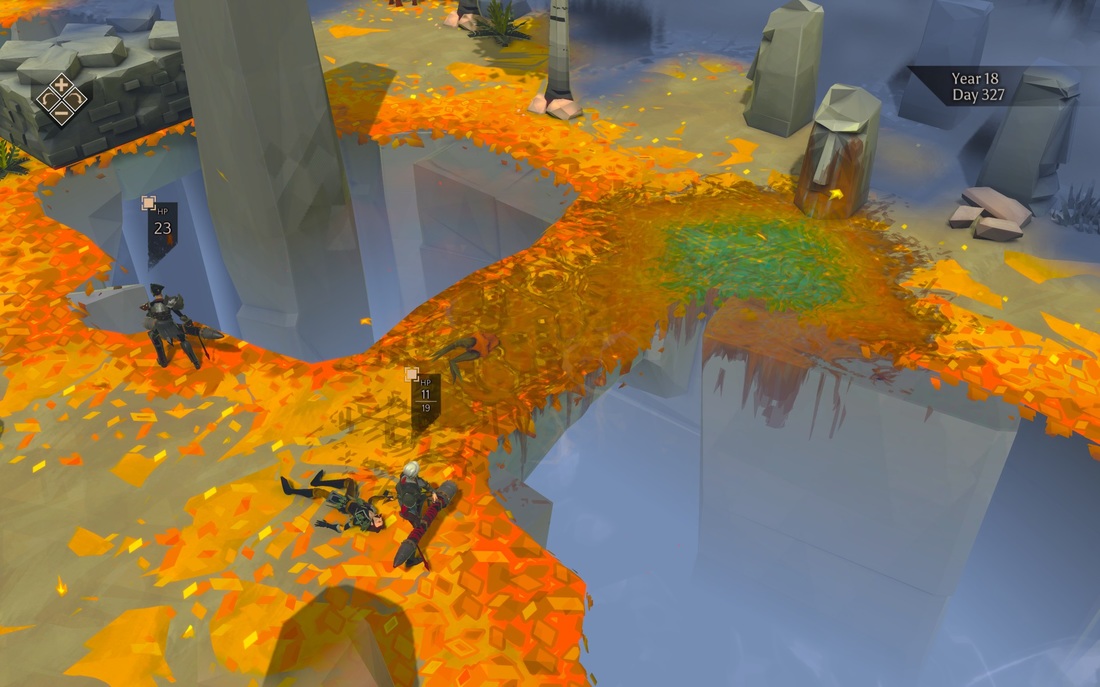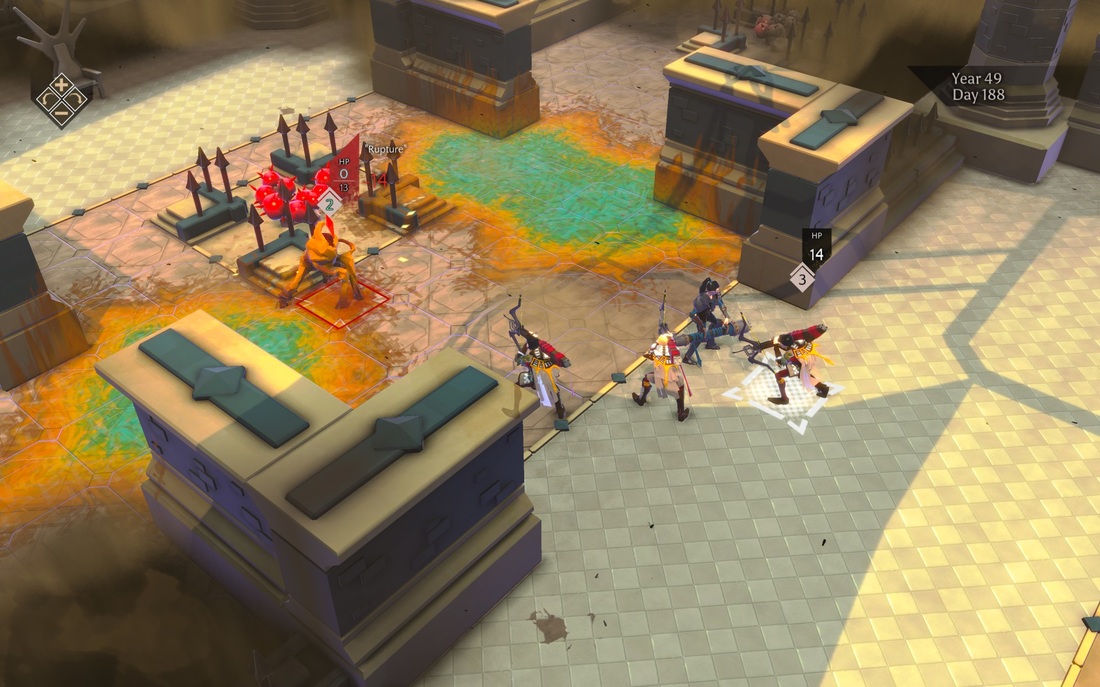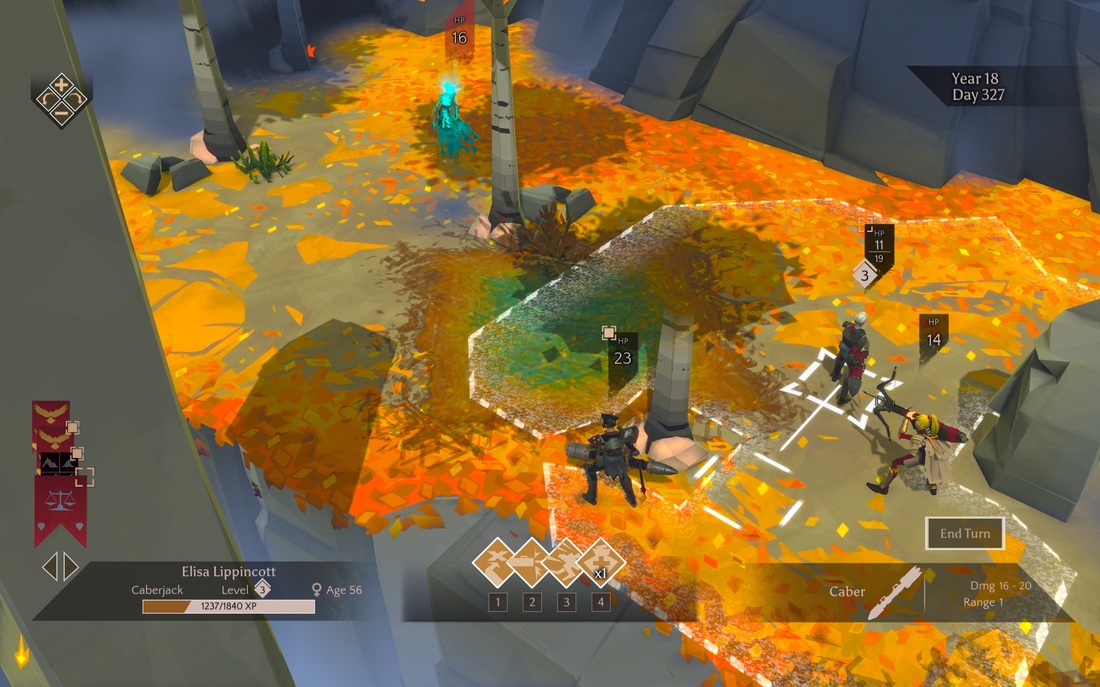1. Gameplay
NOTE: The majority of this game is spent either in combat or addressing randomized events. Despite my two playthroughs with this game, there may be events that I missed. This review will cover the vast majority of the mature content in this game, but be aware that one or two things may have slipped through the cracks.
Massive Chalice is a solid game that had potential to be great but, due to design decisions that were almost certainly pushed because of time and budget constraints, ended up not being as great as it could have been. It combines a turn-based, cover-based tactical combat system with a lineage management system. Basically, you create houses, force people to marry, they have children, and you send those children into combat. On paper, it sounds horrific, but it’s fairly sanitized overall.
The combat is as smooth as butter. It’s easy to figure out and very easy to master. Certain classes are more powerful than others, but it’s not so unbalanced that any of the classes feels weak. Enemies can be annoying, especially the ones that remove XP or cause your characters to age, but with the right tactical approach they’re not totally overpowered. The player just has to be cautious.
The issues come from the other half of the game. While the combat system is clearly well thought out and the various powers, abilities, and personalities fit together and have an obvious, but never harsh, effect on gameplay, the kingdom management elements feel far more haphazard. Characters are born and die so quickly that there is never a chance to get attached to them or develop any sort of relationships. Decisions on marriage are based purely on fertility first, then weeding out undesirable attributes and personality traits. Picking couples based on personal compatibility, politics, or non-combat benefits is never a factor. You can’t even name the characters, although this might be a positive since naming every new character would become tedious quickly.
While the short lifespans and inability to get personally involved with my characters did prevent me from feeling badly when they died, I don’t think this benefit was worth the “cost”. I enjoyed my XCOM characters far more than any of my characters in Massive Chalice and would be more likely to go back and play XCOM because of it. I would recommend this game since I hope that a future sequel improves on the design, but I would not go back and play it again.
It took me around 11 hours to complete one playthrough. While the game is a bit repetitive, especially towards the later chapters, there’s more than enough content and randomization that this game could easily last three or four playthroughs. This could have been increased exponentially if the developers had allowed the player to spend more time developing relationships between characters, but since that isn’t the case I’d say this game would last a normal player somewhere between 10 and 20 hours, depending on how many replays the player attempts.
Once the player accepts the idea that characters will die very quickly, the amount of frustration experienced in this game drops dramatically. For the most part, combat is really easy, especially in the mid-game missions. But the way that the bloodlines work could get a bit frustrating, as it was often difficult to understand why certain characters didn’t seem to have the same marriage options as others. This was especially frustrating when there were no eligible marriage options of the opposite gender, since only characters of the same house could assume the regency for that house.
2. Parental Notices
Violence in this game is extremely mild. Hits from all weapon types will have an obvious visual effect on both human and non-human characters, but there is no blood or gore from any of these attacks.
The only exception is the “rupture”, an enemy type that explodes into a greenish goo upon death. The explosion does not leave any visible gore, but the goo may be the rupture’s blood. This is never discussed in much detail.
This is it for the violence. Even the grenades and explosions have the exact same effect on enemies. Deaths that occur outside of combat are discussed with a simple event and maybe a decision about the legacy of their named weapon. It’s not a particularly violent game at all.
While the forwarding of lineages is a prominent factor in this game, the mechanics of it are never discussed. The only thing that even comes close is the fertility of a particular character. The game uses the combined fertility of two characters of the opposite sex to determine how often they have children. It’s purely a stat, cold and logical.
Substances took two obvious forms in this game. The first is the health potions that the characters can use to remove damage. Using these potions caused little green crosses to float around the healed character for a short period of time.
Many of the characters can acquire the “Revelry” trait. This frequently leads to the character being “drunk” in combat. While the player never sees anyone consume alcohol, the movement patterns of drunk characters are sporadic and unpredictable.
One or two of the events have to do with simple bets. The one that I saw involved arm wrestling. This is the only type of gambling that the game discusses.
3. Other Factors
There are no modding tools available for this game.
While a number of the elements seemed to dance around the concept of religion, I could never find any obvious elements that pointed to an organized system of religions or beliefs. Therefore, religion is not a factor in this game.
Some of the events involve managing unruly crowds and dealing with crimes. For example, one event involves trying to figure out the best way to quell a rebellion.
There are no multiplayer modes for this game.
Extreme sports is not a factor in this game.
Magic is a fairly prominent factor in this game, which should be of no surprise considering the game revolves around a giant stone chalice that houses two talkative spirits who are working on a spell to banish an invading species. While most of the human characters only use physical attacks to hurt enemies, a few of the enemy characters have magical attacks that they can use on players.
There are also a few magical items that the player can make and use that have a variety of beneficial effects. The one that I used most often was the “veil armor” that allowed my hunters to travel anywhere on the map and remain invisible.
There are no additional factors for this game.
0 Comments
Leave a Reply. |
Like what we do? Want to see more? Donate to the site using the button below!
Not sure what a term means? Read the definitions!
Not sure what a review section is about? Find out more information!
|











 RSS Feed
RSS Feed